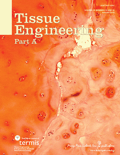
Tissue Engineering Part A
Scope & Guideline
Empowering Scientists to Redefine Regenerative Medicine
Introduction
Aims and Scopes
- Biomaterials Development and Characterization:
Research focused on the design, synthesis, and evaluation of novel biomaterials such as hydrogels, scaffolds, and composites for various tissue engineering applications. - Cell and Tissue Engineering:
Studies involving the differentiation and application of stem cells, including mesenchymal stem cells and induced pluripotent stem cells, for tissue regeneration and repair. - 3D Bioprinting and Biofabrication:
Innovative approaches to bioprinting techniques, including the use of bioinks, to create complex tissue structures and organoids for research and therapeutic applications. - In Vitro and In Vivo Models:
Development of sophisticated in vitro and in vivo models to study cellular behavior, tissue interactions, and the effectiveness of engineered constructs in regenerative medicine. - Mechanobiology and Biophysical Cues:
Investigating the effects of mechanical forces and environmental factors on cell behavior, tissue development, and regeneration. - Immunology and Regenerative Medicine:
Research exploring the immunomodulatory properties of biomaterials and therapies that enhance tissue regeneration while minimizing adverse immune responses.
Trending and Emerging
- Advanced 3D Bioprinting Techniques:
There is a significant increase in publications focusing on novel bioprinting techniques and bioinks, highlighting the importance of creating complex, functional tissue structures. - Nanotechnology in Tissue Engineering:
The integration of nanomaterials and nanoengineering approaches is gaining traction, with studies exploring their role in enhancing the properties of scaffolds and promoting cellular interactions. - Extracellular Vesicles and Secretomes:
Research on the therapeutic potential of extracellular vesicles and stem cell-derived secretomes is emerging as a promising area, focusing on their roles in tissue repair and regeneration. - Personalized Medicine and Patient-Specific Models:
The development of personalized tissue models and therapies tailored to individual patient needs is becoming increasingly prominent, reflecting a shift towards precision medicine. - Mechanobiology and its Applications:
Studies examining the influence of mechanical stimuli on cellular behavior and tissue development are on the rise, emphasizing the importance of biophysical cues in tissue engineering.
Declining or Waning
- Traditional 2D Cell Culture Models:
There is a noticeable decline in studies solely based on traditional 2D cell cultures as researchers increasingly adopt 3D models that better mimic the in vivo environment. - Static Culture Systems:
Static culture systems are being replaced by dynamic and perfused systems that provide more physiologically relevant conditions for tissue engineering. - Single-Cell Analysis Without Integration:
The focus on single-cell analysis without integrating multi-omic approaches is waning, as comprehensive profiling techniques become more desirable for understanding complex biological systems.
Similar Journals
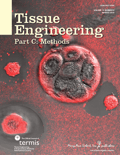
Tissue Engineering Part C-Methods
Bridging Biology and Engineering through Methodological ExcellenceTissue Engineering Part C: Methods is a prestigious academic journal published by MARY ANN LIEBERT, INC, specializing in the dynamic and rapidly evolving fields of bioengineering and biomedical engineering. With an ISSN of 1937-3384 and E-ISSN 1937-3392, this journal provides a platform for the dissemination of cutting-edge research from 2008 to 2024, showcasing methodologies that advance the science of tissue engineering. Ranked in the second and third quartiles across several categories in 2023, including a notable Q2 in Biomedical Engineering, the journal is recognized for its contributions to the interface of biology and engineering. Additionally, it holds commendable Scopus ranks that highlight its influence and reach within the scientific community. Although it does not offer open access, the journal remains vital for researchers, professionals, and students seeking insightful articles that bridge the gap between theoretical research and practical application in tissues and regenerative medicine. With its rigorous peer-review process and commitment to quality, Tissue Engineering Part C: Methods continues to be an essential resource for those at the forefront of tissue engineering innovations.
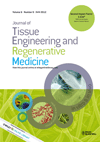
Journal of Tissue Engineering and Regenerative Medicine
Transforming healthcare through cutting-edge research in tissue engineering.Journal of Tissue Engineering and Regenerative Medicine, published by WILEY, stands as a pivotal platform in the fields of biomaterials, biomedical engineering, and regenerative medicine. With an ISSN of 1932-6254 and an E-ISSN of 1932-7005, this journal, based in the United Kingdom, has consistently delivered high-quality research since its inception in 2006, converging critical insights through 2024. With an impressive citation profile reflected in its Scopus rankings—specifically a rank of #58 in Medicine and #75 in Biomedical Engineering—the journal is acknowledged for its substantial impact, as demonstrated by its competitive quartile standings in 2023. Notably, it maintains a Q3 ranking in Biomaterials and Q2 in both Biomedical Engineering and Medicine (miscellaneous), showcasing its influence and relevance in the rapidly evolving interplay between engineering and medicine. The journal serves as a vital resource for researchers and practitioners aiming to stay abreast of innovations and breakthroughs in regenerative therapies, tissue scaffolds, and biomaterials. While not an open-access publication, it fosters academic dialogue and knowledge dissemination that is crucial for advancing the field.
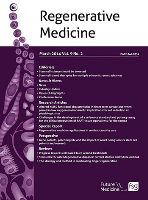
Regenerative Medicine
Bridging Disciplines for Regenerative BreakthroughsRegenerative Medicine, published by Taylor & Francis Ltd, is a pivotal journal within the field of biomedical research, focusing on the innovative advances in regenerative and restored functions in human health. With an ISSN of 1746-0751 and an E-ISSN of 1746-076X, this esteemed journal boasts a commendable impact factor within its categories, notably holding the Q2 status in Embryology and Q3 in Biomedical Engineering as of 2023. Covering a broad spectrum of topics from stem cell research to tissue engineering, it serves as a crucial platform for interdisciplinary collaboration among researchers, professionals, and students dedicated to the regeneration of tissues and organs. Given its comprehensive scope from 2006 to 2024, the journal continues to attract high-quality manuscripts that advance the frontiers of knowledge in regenerative medicine. Researchers and practitioners alike are encouraged to engage with the latest findings and methodologies disseminated in this vital publication.

Stem Cell Research & Therapy
Advancing the Frontiers of Regenerative MedicineStem Cell Research & Therapy is an esteemed international journal published by BMC, specializing in the rapidly advancing fields of stem cell research and regenerative therapies. Since its inception in 2010, the journal has embraced an Open Access model, ensuring that vital research is readily accessible to a global audience. With a significant impact in the scientific community, it holds Q1 quartile rankings in prestigious categories such as Biochemistry, Genetics and Molecular Biology, Cell Biology, and Molecular Medicine, highlighting its critical role in promoting groundbreaking research. The journal’s high Scopus rankings—placing it in the top echelons of its fields—reflect its commitment to publishing high-quality, peer-reviewed studies that advance our understanding of stem cell biology and therapeutic applications. Aimed at researchers, healthcare professionals, and students alike, Stem Cell Research & Therapy is an indispensable resource for those dedicated to the exploration and innovation within this transformative area of science.

Current Stem Cell Research & Therapy
Bridging Research and Therapy in Stem Cell InnovationCurrent Stem Cell Research & Therapy, published by Bentham Science Publishers Ltd, is a leading journal dedicated to advancing the field of stem cell research. With an ISSN of 1574-888X and an E-ISSN of 2212-3946, this journal has been a valuable resource since its inception in 2006 and continues to broaden its scope through 2024. Recognized in the Q2 quartile for Medicine (miscellaneous) and ranked in the 66th percentile among its peers, the journal plays a crucial role in disseminating high-quality, peer-reviewed research that explores both the therapeutic and biological implications of stem cells. Located in the United Arab Emirates, Current Stem Cell Research & Therapy embraces a global audience of researchers, professionals, and students, providing a vibrant platform for discourse and innovation. While the journal offers subscription-based access, it remains committed to enhancing the scientific community's understanding of stem cell therapy and its applications across various medical fields.

Journal of Orthopaedic Translation
Exploring groundbreaking studies that redefine orthopedic care.The Journal of Orthopaedic Translation is a leading peer-reviewed publication dedicated to advancing the field of orthopedics through innovative research and clinical implications. Published by Elsevier and available as an Open Access journal since 2013, it ensures that cutting-edge insights and findings are accessible to a global audience, promoting collaboration and knowledge sharing among researchers, professionals, and students. With an impressive impact factor, the journal has achieved a remarkable Q1 ranking in the categories of Orthopedics and Sports Medicine, placing it in the top 1% of journals in this highly specialized field. As of 2023, it ranks #5 out of 321 in conjunction with a notable 98th percentile achievement in Scopus Ranks, underscoring its reputation for excellence and relevance. Through a focus on both basic and applied research, the Journal of Orthopaedic Translation aims to bridge the gap between laboratory and clinical practice, contributing significantly to the evolving landscape of orthopedic health. Join us in exploring the transformative studies shaping the future of patient outcomes and surgical interventions.

Stem Cells International
Advancing the Frontiers of Stem Cell ResearchStem Cells International is a premier open access journal published by HINDAWI LTD, focusing on the rapidly evolving field of stem cell research. With an ISSN of 1687-966X and E-ISSN 1687-9678, this journal has been a vital resource since its inception in 2010, showcasing innovative studies and breakthroughs up to 2024. Positioned in Q3 in Cell Biology and Q2 in Molecular Biology for 2023, as well as well-ranked in the Scopus database, the journal serves as an essential platform for researchers, professionals, and students dedicated to exploring the implications of stem cell technology in regenerative medicine and biological research. The open access model ensures wide accessibility, fostering collaboration and knowledge-sharing across the scientific community, making it a cornerstone in advancing the understanding and application of stem cell science.
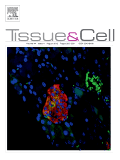
TISSUE & CELL
Unveiling the Mysteries of Cells and TissuesTISSUE & CELL is a prominent academic journal, published by CHURCHILL LIVINGSTONE, that has been at the forefront of research in the fields of cell biology, developmental biology, and miscellaneous areas of medicine since its inception in 1969. With a strong focus on high-quality research, TISSUE & CELL has established itself within the academic community, holding a Q3 ranking in both Cell Biology and Developmental Biology, and a Q2 ranking in Medicine as of 2023. The journal aims to disseminate significant findings that contribute to the understanding of tissue structure and function, helping to bridge the gap between basic biological research and clinical applications. While it operates on a subscription basis and does not currently offer Open Access options, the journal remains a vital resource for researchers, professionals, and students interested in cutting-edge developments in the biological sciences. The journal's address is located in the scenic city of Edinburgh, further establishing its academic heritage in the United Kingdom.

Stem Cells and Cloning-Advances and Applications
Connecting Science and Application in Cloning TechnologiesStem Cells and Cloning-Advances and Applications is a leading peer-reviewed journal dedicated to the dynamic fields of stem cell research and cloning technologies. Published by DOVE MEDICAL PRESS LTD in New Zealand since 2008, this Open Access journal ensures that groundbreaking findings are accessible to a global audience. With a focus on innovative applications and advancements in cellular biology, the journal plays a pivotal role in disseminating knowledge within the scientific community. The journal currently holds an impact factor that reflects its influence, with notable rankings in both Cell Biology and Medicine (Miscellaneous), showcasing its interdisciplinary relevance. Researchers, professionals, and students alike benefit from the journal’s wide-ranging contributions, covering critical topics from regenerative medicine to genetic research. With a commitment to fostering collaboration and encouraging discussion in these cutting-edge domains, Stem Cells and Cloning-Advances and Applications continues to be a vital resource for advancing scientific inquiry and application.

Acta Biomaterialia
Shaping the Landscape of Biomedical InnovationActa Biomaterialia, published by Elsevier Science Ltd, is a leading journal in the fields of biochemistry, biomaterials, biomedical engineering, biotechnology, and molecular biology. With an ISSN of 1742-7061 and an E-ISSN of 1878-7568, this prestigious journal has secured a remarkable position in the academic community, evidenced by its inclusion in the Q1 category across multiple disciplines for 2023. It ranks impressively at #21 in biochemistry, #16 in biomedical engineering, #18 in biotechnology, and #11 in biomaterials, reflecting its high impact and relevance to ongoing research and development. The journal provides a platform for disseminating innovative research and advancements in the design and application of biomaterials, contributing to scientific discussions that propel the field forward. Although it does not currently offer open access options, Acta Biomaterialia continues to attract contributions that advance our understanding of biomaterials and their interactions with biological systems, ensuring that researchers, professionals, and students remain informed about the latest trends and breakthroughs in this rapidly evolving area of study.